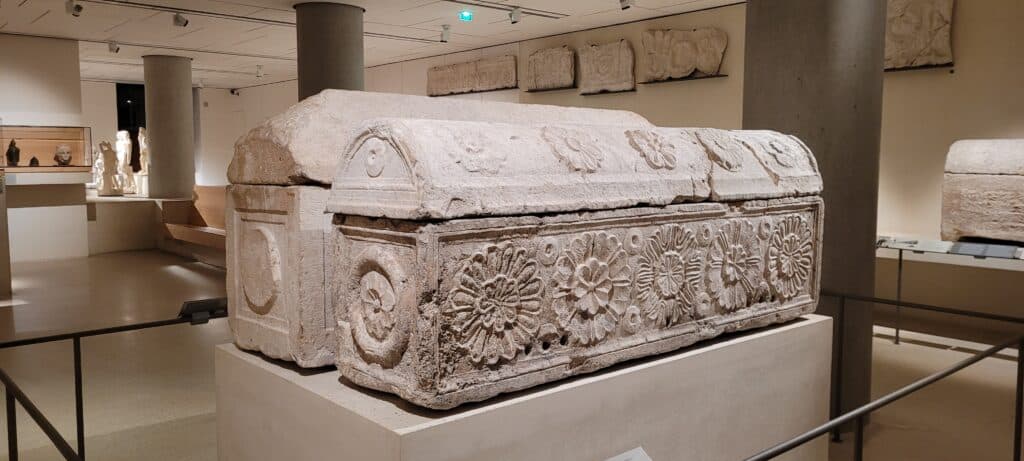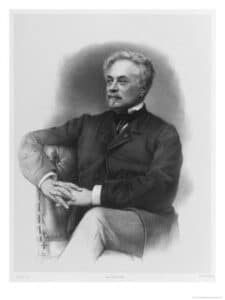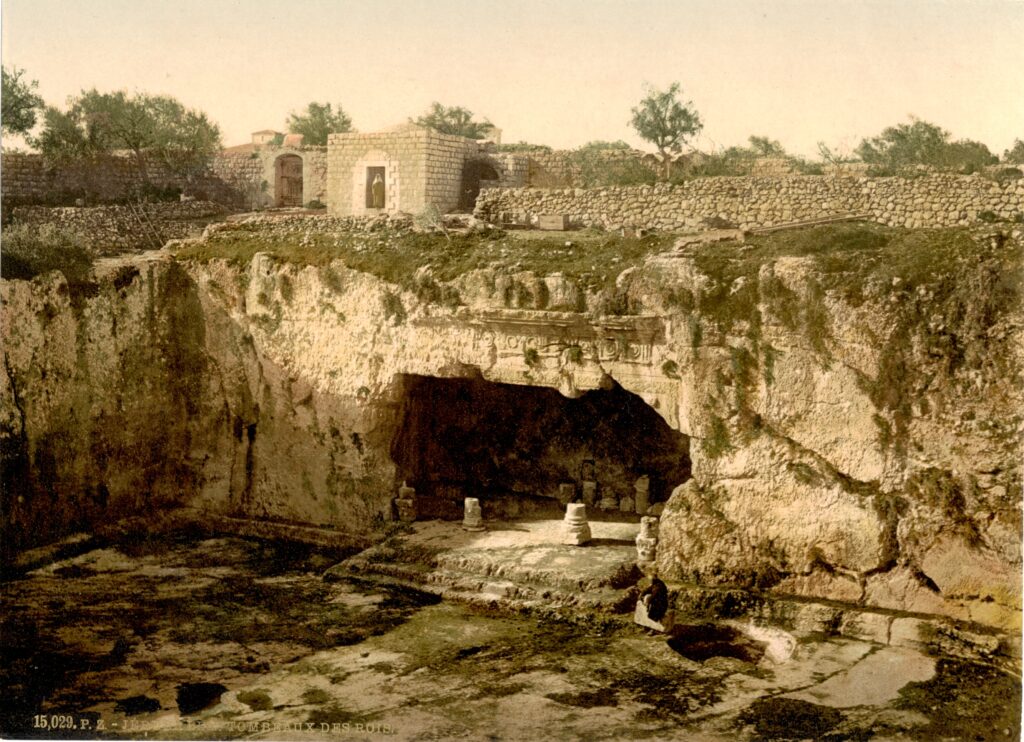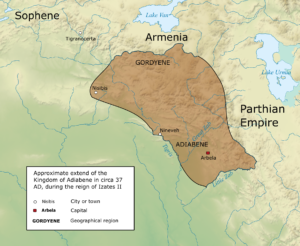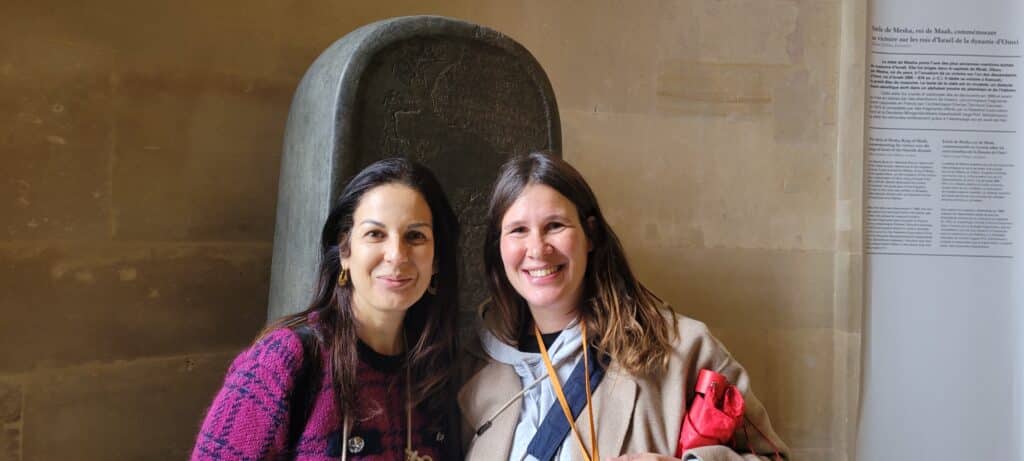Did you hear about an ongoing trial between the museum the Louvre and a group of rabbis from Israel?
This trial, that was initiated by the rabbis in 2019, is about a 2000 year old sarcophagus.
Sometimes, when we are lucky, my tourists and I get to see the sarcophagus that was the final resting place of a very special lady, Queen Helena of Adiabene.
Why do the rabbis care about her? How did the sarcophagus end up in the Louvre ?
In 1863, Félicien de Saulcy, a French archeologist who was interested in biblical history, traveled through Palestine.
He excavated in Jericho and close to the Old City of Jerusalem. There, he discovered a monumental burial site with two sarcophagi.
One of them carried an inscription in ancient Hebrew, saying “Saddan Malkata” and “Saddah Malkata“.
The translation is “Our mistress the Queen”.
Inside one of the sarcophagi, Félicien found bones, wrapped in a shroud embroidered with gold.
Félicien believed he had discovered the tombs of King David and King Salomon, so the site was named “The tombs of Kings”.
As it is forbidden in Jewish religion to disturb a tomb, already in 1863 several rabbis in Jerusalem protested vehemently against the archeological dig.
So the French archeologist Félicien brought the sarcophagi from Jerusalem to Paris secretly.
As time went on, archeology developed and it became clear that this tomb was indeed royal, but from a different period and hence of a different royalty.
So, who is this “Mistress the Queen – Saddan Malkata“?
Her name was Helena, she lived in the 1st century CE, and she was the queen of Adiabene, which is where is located Kurdistan today.
Helena was married to her brother, Monobazuz I and they had children together.
Helena’s favorite child was her youngest son, Izates.
He was chosen to become King if his father died and therefor his older brothers and their wives were jealous of him.
Helena, to protect him, sent him far away.
As he left, Helena took lessons in Judaism with a Jewish sage, Eleazar.
Izates had a Jewish master too, Hananiah.
After some times they both converted to Judaism.
When Helena’s husband died, she insisted that Izates became King.
The nobles of her country advised her to have her other sons killed, because they believed his brothers would not agree out of jelousy.
Helena refused and instead, appointed her oldest son as guardian of Adiabene for the time being.
When Izates returned home to become King, he and his brothers remained friendly towards each other and the noblemen of Adiabene admired Helena for her intelligence and sensitivity.
In the year 46 AC, Helena decided to visit Jerusalem, to be close to the splendid Jewish Temple of King Herod.
When she arrived in Jerusalem it occurred that Israel (Second Temple period) was struck by a famine.
Helena used her fortune and bought corn and figs from abroad to save the inhabitants.
She built herself a magnificent palace, just south of the Jewish temple, of which remains have been discovered recently.
She remained in Jerusalem for 9 years.
The Jewish sages wrote that she offered two golden items to the Temple.
One of them was a candlestick that was fixed above the door of the Temple.
It was very shiny, and when the sun rose in the morning, it reflected sun rays at the exact time when a Jew had to recite the Shema, a very important prayer in Judaism.
She also offered a golden plaque to the Temple with the text from the Torah that described what would happen to a woman who cheated on her husband.
Helena was very pious and when her beloved son Izates went to war, she made a vow to become a Nazarite.
A Nazarite in Judaism, was a person who vowed not to drink wine, not to cut his or her hair and not to approach a dead body, even if that was for the funeral of a family member.
The vow lasted for 7 years.
Helena chose to be a Nazarite for 14 years !
When Izates died in 55 AC, Helena returned to Adiabene, where shortly afterwards, she died too.
The bodies of Izates and his mother Helena were transferred back to Jerusalem, where they were buried.
The Talmud wrote where the tomb was located and Josephus Falvius wrote about her monumental tomb that had a pyramid.
The tomb that Félicien found was exactly where the Talmud wrote it was, and indeed monumental, impressive and magnificent.
The only thing missing was the pyramid.
The tomb can still be visited today in Israel with a Private tour guide from Jerusalem, the land on which the tomb was discovered is owned by the French government today.
Indeed, when Félicien found the tomb, the site was sold to the French government by the then ruling Ottoman empire.
The tomb was built around a huge open courtyard, dug out of the bedrock.
The façade was monumental, with pilasters.
The entrance to the tomb was protected by an enormous grindstone that could open and close with a special mechanism.
The French consulate in Jerusalem opens site for visitors every now and then.
But until today, in Jerusalem, some rabbis protest, because they do not agree that this Jewish burial site is not owned by Jews. These same rabbis believe that the sarcophagus and the remains of Helena should be returned to Jerusalem, where Helena chose to be buried.
If you want to visit the Louvre with Flora as your private guide in Louvre, please refer to our Jewish Louvre tour.
